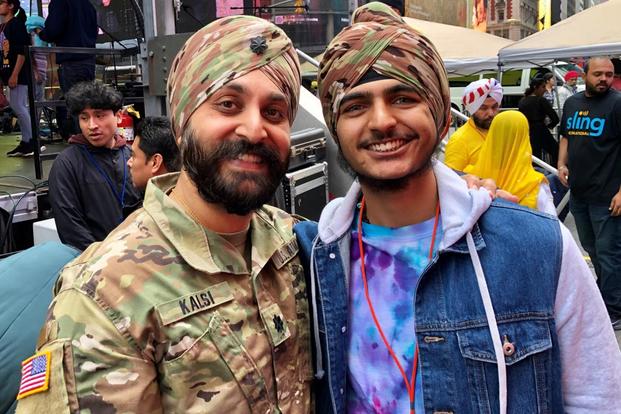Following graduation this June, Manav Sodhi will help lead a new wave of Sikh soldiers enlisting in the U.S. Army who will be allowed to wear the traditional turban and beard in Basic Combat Training.
Sodhi, who is currently attending Kings Park High School in New York, was recently granted a religious accommodation by the Army, according to the Sikh American Veterans Alliance (SAVA).
"I wanted to join the Army ever since I was a kid," Sodhi said in a recent SAVA news release. "My great grandfather served in the Army, and I wanted to follow his footsteps."
Practicing Sikhs serving in the Army are nothing new, but SAVA's release states that Sodhi is the first high school student to receive a religious accommodation so he can enlist in the Army as a Sikh.
He is at least among the first. There are currently 60 religious accommodations that have been granted to Sikhs entering the service, according to Hank Minitrez, a spokesman for the Army. Fourteen of those were granted as pre-accession waivers to high school students like Sodhi.
Army Lt. Col. Kamal Kalsi, who is the president of the non-profit advocacy group that promotes Sikhism and military service, was surprised to learn there are 13 other high school students who will be allowed to enlist in the Army and openly serve as Sikhs.
This is a new milestone, he said.
"It shows progress," Kalsi told Military.com, adding that he has been involved in this effort since he was granted the first such accommodation in 2009. "I was the first to get the accommodation for turban and beard way back in the day."
Sodhi credited Kalsi as his inspiration for wanting to join the Army.
"My mother took me to an event at city hall where I met Lieutenant Colonel Kalsi for the first time, and he was in his Army uniform with his turban and beard," Sodhi said in the release. "That was an amazing day for me because I realized then that I can freely practice my religion and serve my country too."
The Army changed its policy in 2017 to allow waivers for religious accommodation, Kalsi said.
"That came after many, many years of effort," he said. "Right now, our focus is to help open doors in the other branches of service."
Currently, there are no turban and beard waivers for religious freedom in the other services, but there are many Sikh men and women serving in uniform, Kalsi said, noting that it is easier for Sikh women since wearing a turban is optional for them.
Still, many Sikh service members have told SAVA they would like to see a policy change across the services, Kalsi said. "Many of them bemoan the current policy that doesn't allow them to keep their religious traditions."
Wearing a beard and turban is "critical because it is really part of our identity as Sikhs," he said.
"It's also part of our American upbringing to be able to practice our faith; you know religion freedom is a critical part of being an American," Kalsi said. "It's important to fight for the things you believe in, and religious freedom is one of those things."
He said that maintaining one uniform standard isn't as important as "what binds us together ... we are fighting for the same mission."
"When I deployed, nobody cared that I had a turban and a beard; they only cared that I did a good job," said Kalsi, who deployed to Afghanistan's Helmand Province in 2011 as an emergency room doctor.
"It was really very, very bloody. I took care of some really devastating injuries. It was tough," he said.
Military service has always been a proud tradition in Sikh culture, Kalsi said, adding that more than 80,000 Sikh soldiers died serving alongside allied forces in World War I and World War II.
"The Germans were actually terrified of the Sikh regiments in World War I; they referred to [Sikhs] as the black lions," he said. "If we were good enough to fight in a world war and die in the trenches, then I think we are good enough to continue to serve today."
-- Matthew Cox can be reached at matthew.cox@military.com.












